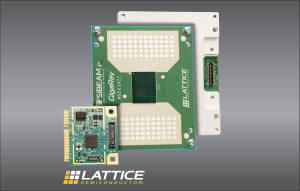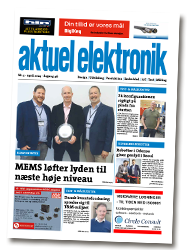Lattice Introduces GigaRay 60 GHz Modules for Gigabit-Class Wireless Infrastructure Applications
Lattice Introduces GigaRay 60 GHz Modules for Gigabit-Class Wireless Infrastructure Applications
Innovative Phased Array RF and Beam-Steering Solutions Built with SiBEAM Technology Reduce Wireless ISPs and Mobile Network Operators’ Total Cost of Ownership
- GigaRay MOD65412 modules simplify the integration of 60 GHz technology and accelerate time-to-market for communications equipment manufacturers
- The high capacity 60 GHz band allows operators and service providers to offer 5G-class services in a part of the spectrum that is license-free in most regions
- Lattice’s SiBEAM technology significantly reduces the installation and maintenance costs of wireless broadband network deployment
PORTLAND, OR – Dec. 4, 2017 – Lattice Semiconductor Corporation (NASDAQ: LSCC), the leading provider of customizable smart connectivity solutions, today announced the release of the GigaRay™ MOD65412 60 GHz module set, the industry’s first pre-certified, production- ready modular solution for high speed wireless infrastructure applications. Lattice’s SiBEAM® phased array antenna and electronic beam-steering technology minimizes installation time and substantially reduces maintenance costs for operators of fixed and mobile broadband networks. The module set offers a complete solution that accelerates the development and lowers the design risk and implementation cost of communications equipment.
Increasing production and consumption of data, particularly in urban environments, is driving operators of commercial and public broadband networks to add capacity at the edge of the network. The license-free 60 GHz band offers operators the unique combination of high data capacity, high spectrum reuse and low administrative costs, which collectively enable an effective alternative to expensive and time-consuming fiber deployment. Conventional 60 GHz
products have been cumbersome and expensive to install and maintain. Lattice’s GigaRay modules give operators the opportunity to fully exploit the potential of the 60 GHz band.
“Urban consumers, enterprises and smart city initiatives are driving the demand for ubiquitous high-speed data in all regions, but at a price point that fiber cannot match,” said Neil Bullock, director of business development and strategic marketing at Lattice Semiconductor. “Lattice’s GigaRay modules using SiBEAM phased array antenna and beam-steering technologies are the perfect combination to enable network operators of all types to deliver gigabit-class edge connectivity efficiently using the 60 GHz band.”
The MOD65412 module set supports distances of up to 200 meters at 1 Gbps TCP/IP and up to 300 meters at 300 Mbps TCP/IP data bandwidth, with a 45 degree steering range. To support evaluation of the technology and prototype development, Lattice is offering a mini-PC based SK65415 evaluation kit and the SK65412 development kit.
About Lattice Semiconductor
Lattice Semiconductor (NASDAQ: LSCC) is a leader in smart connectivity solutions at the network edge, where the “things” of IoT live. Our low power FPGA, 60 GHz millimeter wave, video ASSP and IP products deliver edge intelligence, edge connectivity, and control solutions to the consumer, communications, industrial, compute, and automotive markets. Our unwavering commitment to our global customers enables them to accelerate their innovation, creating an ever better and more connected world.
For more information about Lattice please visit http://www.latticesemi.com. You can also follow us via LinkedIn, Twitter, Facebook, YouTube, WeChat, Weibo or Youku.
# # #
Lattice Semiconductor Corporation, Lattice Semiconductor (& design), SiBEAM, GigaRay and specific product designations are either registered trademarks or trademarks of Lattice Semiconductor Corporation or its subsidiaries in the United States and/or other countries.
GENERAL NOTICE: Other product names used in this publication are for identification purposes only and may be trademarks of their respective holders.



